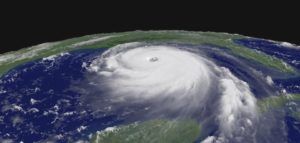Scientists at Climate Forecast Applications Network (CFAN) have made a breakthrough in understanding of the long-range impact of global climate dynamics on Atlantic hurricane activity. They have used this insight to develop a new model to forecast the strength of the 2018 North Atlantic hurricane season.

They calculate an 80 percent probability of an above normal 2018 Atlantic hurricane season. Specifically, they expect it to have a total Accumulated Cyclone Energy (ACE) of 132 (+/-50) and 1.7 (+/-1.1) US landfalls. These values are near the averages for the active period since 1995.
NOAA classifies seasons with an ACE index above 111 as “above normal” and those with an ACE above 152 as “extremely active.”
“Forecasts in December for next year’s Atlantic hurricane activity help many businesses,” said Judith Curry, president of CFAN. “For example, they provide valuable guidance to those writing or using insurance and reinsurance contracts.”
However, most experts believe that today’s hurricane forecasting models have little to no skill before June. They are based on sea surface temperatures patterns in the tropical Pacific (responsible for El Nino and La Nina events) and the North Atlantic.
CFAN’s scientists have identified precursors to the seasonal Atlantic hurricane activity with lead times as far out as 12 to 24 months. These early precursors involve systematic, repeating interactions among tropical Pacific sea surface patterns, atmospheric circulation patterns over the tropical North Atlantic and the Caribbean Sea, and stratospheric circulation patterns.
“Backtesting of CFAN’s forecast model shows moderate predictive skill of US landfall totals and North Atlantic ACE two years later,” said James Johnstone, senior scientist at CFAN. It accurately indicates high levels of activity for the years of 1995, 2004, 2005, 2011, and 2017. It accurately indicates low levels of activity during the multiyear hurricane ‘droughts’ of 2000-2002 and 2013-15. The model captures low-frequency aspects of interannual hurricane variability, forecasting periods of active and inactive years, but typically underestimates the amplitudes of specific annual anomalies.
Additional information and interviews are available on request.
Download the forecast report here: https://www.cfanclimate.net/dec-fcst-2018-atl-hurr-act
Source: Climate Forecast Applications Network
Was this article valuable?
Here are more articles you may enjoy.

 Munich Re: Insured Losses From Wildfires, Storms and Floods Hit Record High
Munich Re: Insured Losses From Wildfires, Storms and Floods Hit Record High  California Bill Would Require Insurer Claims Handling Plans, And Double Penalties
California Bill Would Require Insurer Claims Handling Plans, And Double Penalties  What The Return of California’s ‘Death Discount’ Means for Litigation
What The Return of California’s ‘Death Discount’ Means for Litigation  First Brands Judge Approves Examiner to Probe Fraud Allegations
First Brands Judge Approves Examiner to Probe Fraud Allegations 